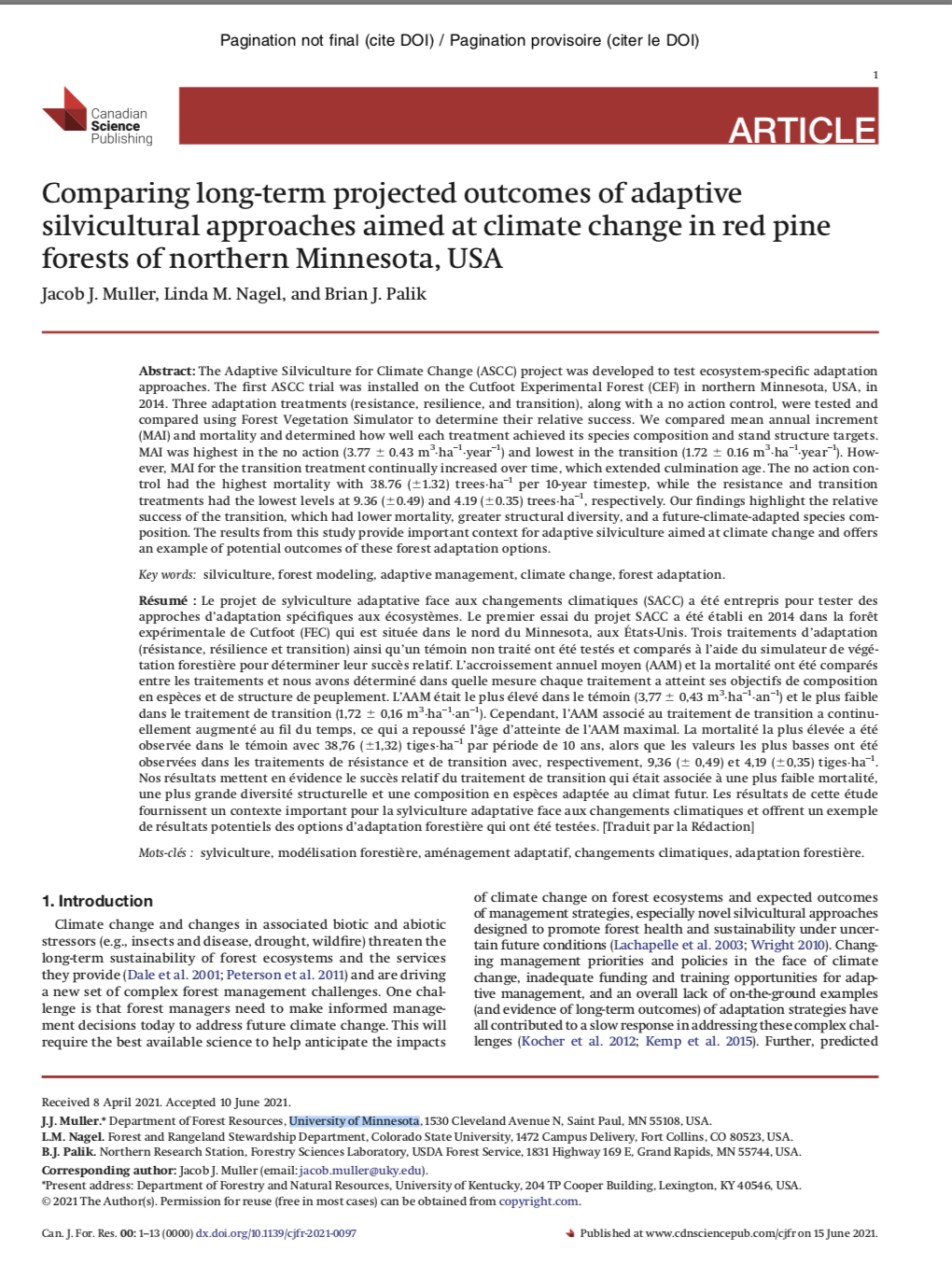Check out the new paper published on the Red Pine ASCC site in Minnesota, "Comparing long-term projected outcomes of adaptive silvicultural approaches aimed at climate change in red pine forests of northern Minnesota, USA."
This article by Jacob Muller, Linda Nagel, and Brian Palik compares the relative success of adaptation treatments (resistance, resilience, transition, and no action) implemented at the Cutfoot Experimental Forest in northern Minnesota using Forest Vegetation Simulator (FVS). The study examines the long-term projections of each treatment using their respective silvicultural prescriptions. The authors looked at productivity and compared the volume produced in each treatment as well as their mean annual increments (MAI). Additionally, the authors examined mortality to determine how well each treatment achieved it’s desired future conditions, and species composition and stand structure targets related to each treatments management goals. The FVS projections show significant differences in growth and mortality patterns across the treatments as well as variations in species composition targets. The authors found MAI in the transition treatment increasing over the simulation period of 100 years (extending the culmination/rotation age). Additionally, morality was the lowest and production was the highest in the transition treatment. The study also found the no action and resistance treatments to have the highest levels of mortality and lowest levels of production. These findings highlight the relative success of the transition treatment, with the lowest mortality, greater structural diversity, and a composition of future-adapted species. This study provides context for climate adaptive silviculture treatments, as well as a glimpse at the outcomes of these forest adaptation options.

Jacob J. Muller, Linda M. Nagel, and Brian J. Palik. Comparing long-term projected outcomes of adaptive silvicultural approaches aimed at climate change in red pine forests of northern Minnesota, USA. Canadian Journal of Forest Research. e-First https://doi.org/10.1139/cjfr-2021-0097

